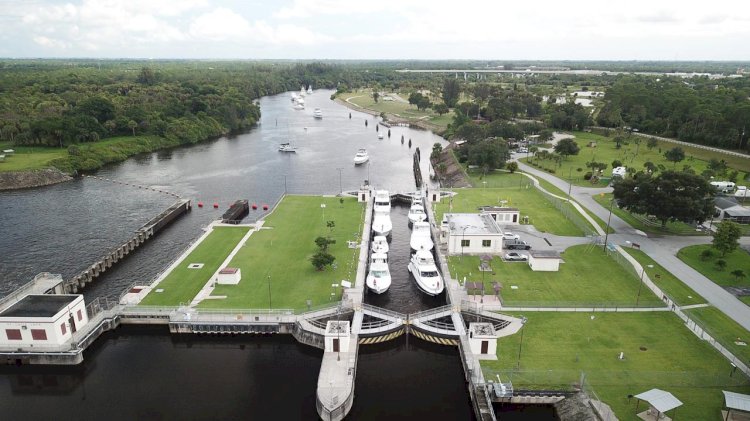Canaveral Lock at Port Canaveral to close for four months

Canaveral Lock will be closed from Jan. 1, 2019, to March 31, 2020, so crews can complete necessary repairs. It’s the first time in a decade that the Lock will be closed for maintenance.
The U.S. Army Corps of Engineers Canaveral Lock lockmaster Daniel Hazebrook announced plans to conduct needed repairs and maintenance on the Canaveral Lock. According to the Corps, the work is necessary to repair aging and damaged infrastructure in addition to improving public and vessel safety. The Lock will be closed and dewatered from Jan. 1, 2020, through March 31, 2020
The Port recognizes the importance of Canaveral Lock and the maintenance required for the dependability and future operation of the Lock.
During the maintenance closure – the first in 10 years – the Lock chamber will be dewatered allowing crews to perform inspections, replace corroded steel structure, paint, install new gate seals and repair manatee protection system components. During the closure, barges, floating cranes and divers will be working in the Lock entrance, requiring vessel operators in the area to use minimal speed and caution for safety.
Located between the Port’s West Turning Basin and the Banana River, Canaveral Lock was built in 1965 by the Army Corps of Engineers to provide vessels with a safe passage from the river to Port Canaveral and the Atlantic Ocean. Operated by the Army Corps of Engineers, the Lock reduces tidal current velocities in Canaveral Harbor, prevents entry of hurricane tides into the river and prevents saltwater intrusion. The largest navigation lock in Florida, Canaveral Lock was built bigger than planned to allow passage of huge Saturn boosters that lofted Apollo rockets into space for NASA.
Canaveral Lock has a 47-ton sector gate that’s 23 feet high, 54 feet wide and 54 feet across the end. The gate is similar to gates on the Okeechobee Waterway gate. The Lock chamber is made of earth walls with a stone bottom and stone riprap on its walls.
The Lock changes water levels by an average of 3 to 4 feet by releasing water from the ocean side to the river side or vice versa. Five Army Corps of Engineers personnel work at the Lock. Petroleum, spacecraft components and commercial fishing vessels are major commodities that pass through the Lock.


























